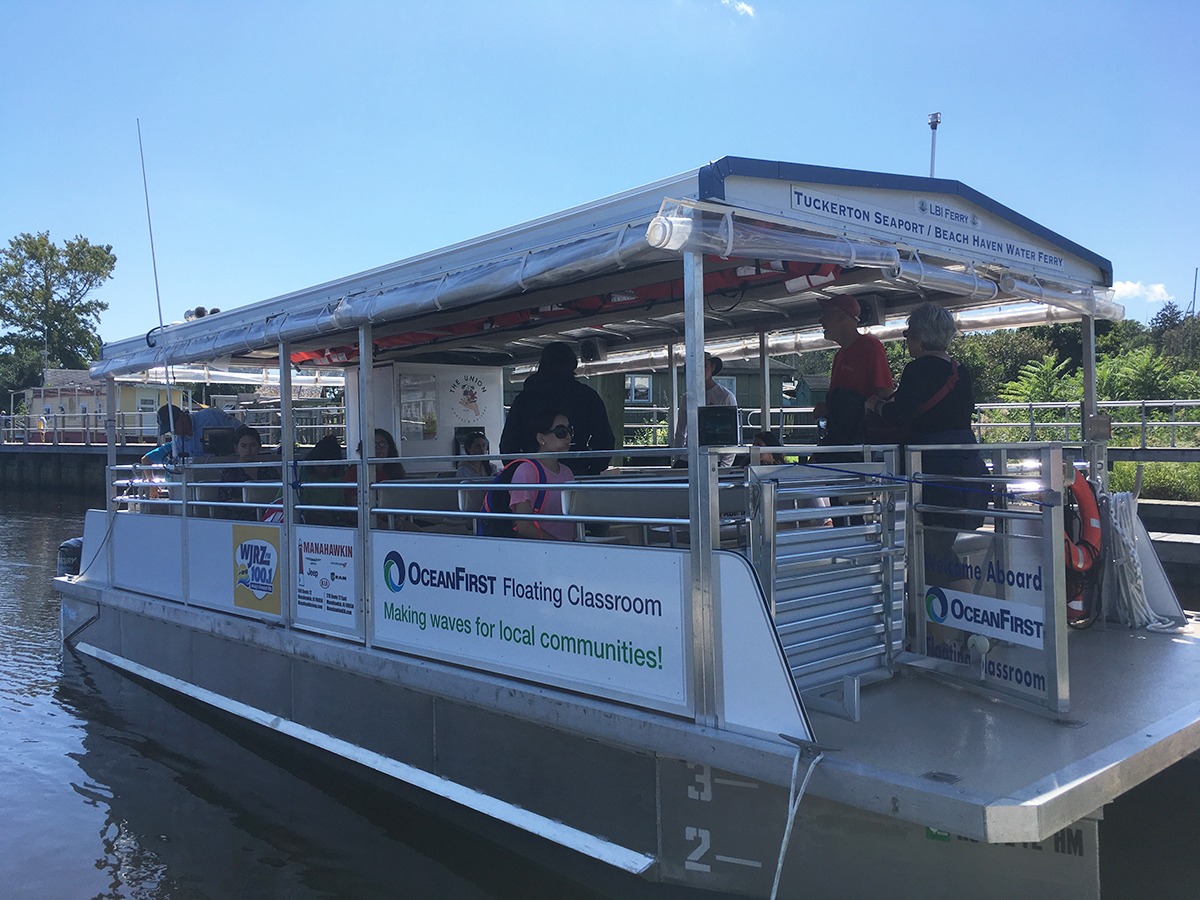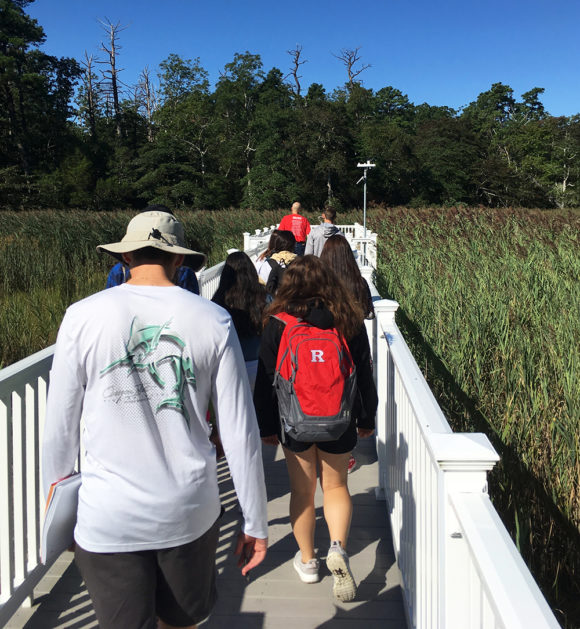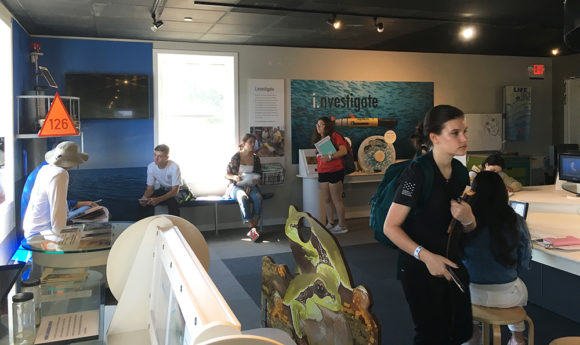
Byrne students on a boat tour of Barnegat Bay to compare natural and man-made shorelines.
The day that Hurricane Dorian veered away from hitting New Jersey, 11 intrepid freshmen enrolled at Rutgers–New Brunswick topped off their first week of college with a visit to the shore as part of the Byrne Family First-Year Seminar, titled “Landscape/Seascape: An Interdisciplinary Exploration.” Byrne seminars are small, one-credit courses that match first-year students at Rutgers with world-renowned faculty from departments and professional schools across the university. Over the course of 10 weeks, students embark on a journey to explore exciting, original research in an interactive classroom environment; many seminars take field trips or conduct hands-on research.

Byrne seminar students on an estuary walk.
The Landscape/Seascape seminar involved an overnight field visit on September 6–7 to the Rutgers University Marine Field Station. This off-campus facility of the Rutgers University Department of Marine and Coastal Sciences is located in Tuckerton, NJ. The seminar, which tasked students with exploring how land meets sea in New Jersey, is co-led by Gary Taghon, professor and undergraduate program director in the Department of Marine and Coastal Sciences, and Holly Nelson, associate professor and undergraduate program director in the Department of Landscape Architecture.
The students overnighted at the nearby Rutgers Jacques Cousteau National Estuarine Research Reserve (JCNERR), also located in Tuckerton, NJ, and is managed by Rutgers NJAES. JCNERR, which includes more than 115,000 acres of forested uplands, wetlands, aquatic habitats and barrier islands, is one of the 29 national estuarine reserves created to promote the responsible use and management of the nation’s estuaries through a program combining scientific research, education and stewardship.
At JCNERR the students stayed in dorm rooms and cooked a communal dinner together before exploring the outdoor museum at Tuckerton Seaport. After a background lecture about the environs, the seminar’s focus on experiential learning set students free at the Seaport with guiding prompts to learn about history (how did early settlements integrate with marshes), the cultural landscape (i.e. why are local boats shaped differently than most sea craft) and present-day concerns (like hurricanes!).
“This Byrne class familiarized students from all over the university with some aspects of the research available through the School of Environmental and Biological Sciences and provided them with a personal connection to one of our field stations associated with NJAES,” said Nelson.

Byrne seminar students on a scavenger Hunt at the Tuckerton Seaport Museum.
A nature walk introduced the students to Phragmites, a genus of four species of large perennial grasses found in wetlands, and other estuarine vegetation. A boat ride in Barnegat Bay provided them a different vantage point from the water, contrasting preserved land with coastal development, complete with bulwarks and houses on stilts.
“While the contrast between preserved and developed land was striking, many of the students noticed nuances between the two– like the mosquito ditches in the marsh which are pronounced on Google Maps but almost invisible from a boat,” Nelson remarked.

